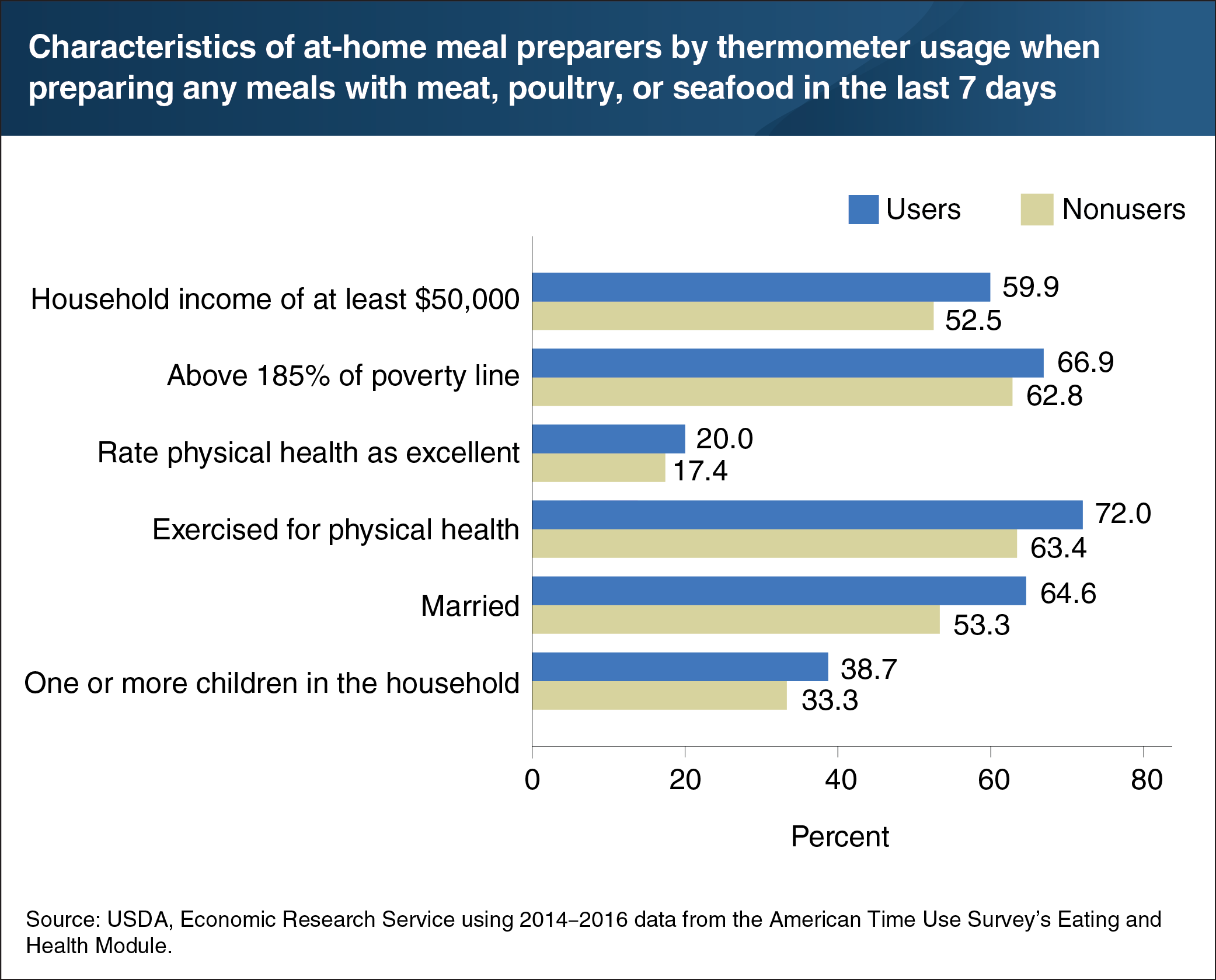Meal-preparer characteristics differ between food thermometer users and nonusers
- by M. Taylor Rhodes and Fred Kuchler
- 3/12/2019

Improperly cooked meat can carry harmful bacteria and pose serious health risks, particularly for people with weakened immune systems, older adults, and children. Food thermometers are recommended when preparing raw meat to verify that food is adequately cooked and pathogens are destroyed. Using data from the American Time Use Survey’s Eating and Health Module, ERS researchers found that 14 percent of at-home meal preparers used a food thermometer during a typical week in 2014 to 2016. Households that used food thermometers were more likely to have an annual household income of $50,000 or more. Based on monthly pretax earnings and adjusting for household size, they were more likely to be above 185 percent of the Federal poverty line. At-home meal preparers who used a food thermometer were also more likely to rate their physical health as excellent, participate in physical activities or exercise for fitness in a given week, be married, and have at least one child in the household. A version of this chart appears in the ERS report Consumer Food Safety Practices: Raw Milk Consumption and Food Thermometer Use, January 2019.

